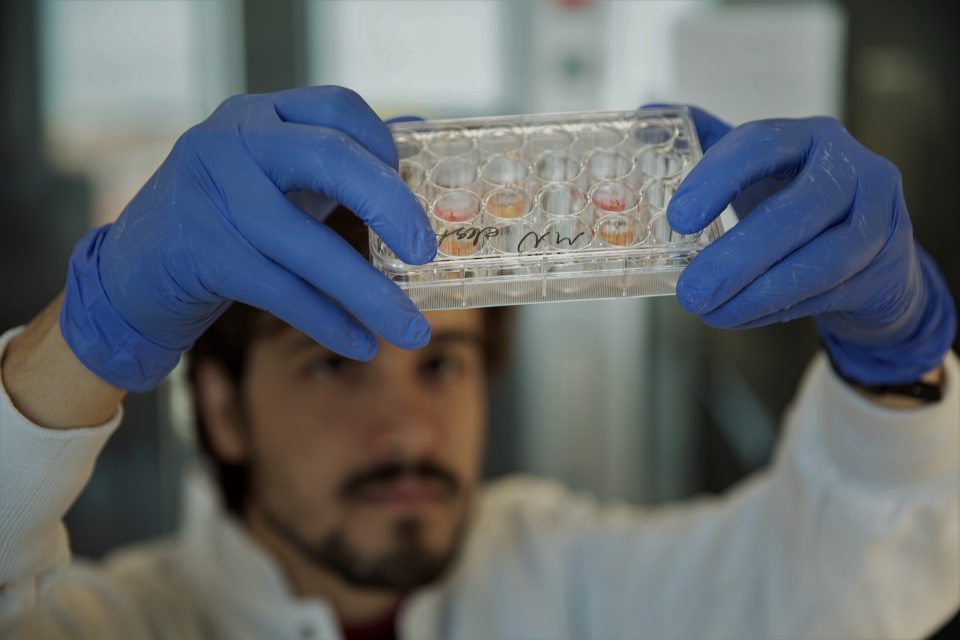16 Feb 2021
Herlev and Gentofte Hospital together with LEO Foundation Skin Immunology Research Center at the University of Copenhagen establish a new research program and biobank with skin tissue and blood samples from 3,000 patients with illnesses such as psoriasis and eczema. The biobank is the first of its kind and will help shed light on some of the most common skin diseases.
For many years, researchers have had difficulties decoding why skin diseases such as psoriasis and eczema affect some people more than others, why some patients develop comorbidities and why some patients do not respond to treatment. A new research program including a biobank is about to change that by elucidating how skin diseases develop in patients over time. Such new knowledge is critical in order to develop new treatments tailored for each patient.
The goal is to collect data from 3,000 patients with skin diseases and in the long term also making data and knowledge available for researchers around the world.
“We are setting up a new research program with clinical data, blood and skin samples from 3,000 patients, which shall help us understand the widespread diseases psoriasis and eczema. We follow the patients continuously over time, which will give us unique data and new insights. Such a biobank simply does not exist anywhere else,” says Charlotte Bonefeld, Acting Executive Director and Professor at the LEO Foundation Skin Immunology Research Center at the University of Copenhagen.
The research program and the biobank are a collaboration between the LEO Foundation Skin Immunology Research Center at the University of Copenhagen and the Department of Dermatology and Allergy at Herlev and Gentofte Hospital. The LEO Foundation has supported the program with DKK 40 million.
Tailor-made treatment and close collaboration
Close collaboration between clinical and basic researchers across hospital and university is at the core of the research program. Together with close contact to patients through patient associations, the interdisciplinary collaboration will ensure the relevance and impact of the research for the patients.
“Our close collaboration between basic and clinical researchers provides a unique opportunity to gather patient information, skin and blood samples from the same patient over several years and will make it possible to conduct new research that will lead to more effective treatments,” says Lone Skov, Clinical Professor and Chief Physician at Herlev and Gentofte Hospital.
“The biobank will be a valuable asset in the future as the center and partners from all over the world will be able to access a comprehensive archive of samples and data of the highest quality. This will have a major impact on how quickly we can translate ideas into concrete results,” she adds.
The recruitment of patients to the research program will begin in 2021.
Top research facilities
The establishment of the new research program also emphasizes that the LEO Foundation Skin Immunology Research Center will continue to be a world-class skin research center. The center shall both be a base for leading researchers in skin diseases and be able to support the collaboration between basic research and the clinical environments at the hospitals.
In order to achieve that goal, top research facilities and infrastructure are crucial. And that is exactly what the new research program will be contributing to.
Jesper Mailind, CEO of the LEO Foundation, is looking forward to following the new research program.
“Skin diseases represent a major problem for many people in their everyday lives. That is why it is important to increase our collective knowledge about skin diseases. With the new biobank, the LEO Foundation Skin Immunology Research Center has a unique possibility to strengthen collaboration between clinical and basic research within immunology, skin and skin diseases – and to collect new knowledge which can in turn pave the way for new treatments of psoriasis and eczema,” he says.
About the new research program
The research program will be established by the LEO Foundation Skin Immunology Research Center at the University of Copenhagen and the Department of Dermatology and Allergy at Herlev and Gentofte Hospital.
The program is supported with DKK 40 million from the LEO Foundation and co-financed with DKK 20 million from Herlev and Gentofte Hospital and LEO Foundation Skin Immunology Research Center.
